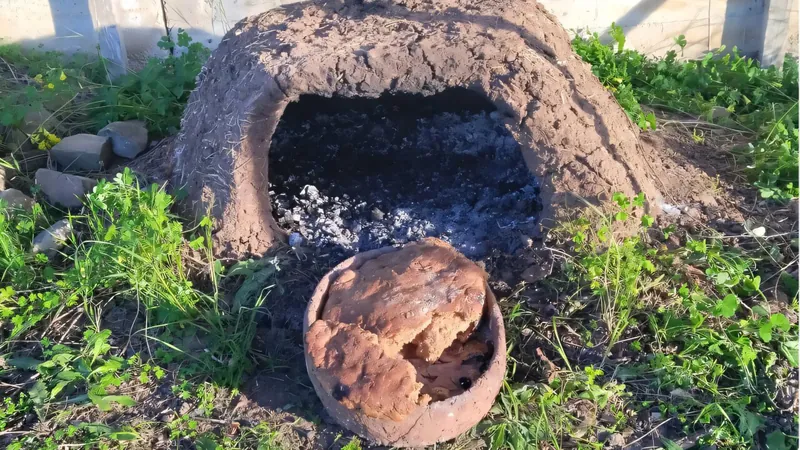
Unveiling Focaccia: A 9,000-Year-Old Culinary Tradition from the Neolithic Era!
2024-11-25
Author: Ting
A Groundbreaking Discovery
A groundbreaking study spearheaded by researchers from the Autonomous University of Barcelona (UAB) and the University La Sapienza in Rome has revealed that the origins of focaccia extend back to the Late Neolithic period, approximately 7000 to 5000 BCE.
During this time, agricultural communities in the Fertile Crescent, a region that encompasses parts of modern-day Iraq, Syria, Lebanon, Israel, and Jordan, crafted a rich culinary heritage that included baking large loaves of bread, known as 'focaccias,' on unique trays recognized as husking trays by archaeologists.
Research Collaboration
The research, published in the esteemed journal Scientific Reports, involved comprehensive analysis done by teams from several prestigious institutions, including the Mila i Fontanals Institution (IMF-CSIC) and the University of Lyon.
The Unique Husking Trays
Husking trays, the centerpiece of this ancient baking endeavor, were crafted with a large oval base and low walls from coarse clay. What makes these trays unique are their internal surfaces, which feature rough textures resulting from repetitive impressions.
Previous experiments using replicas of these trays have provided insights into their probable usage, suggesting that these trays could indeed accommodate the baking of substantial loaves made from flour and water.
Researchers propose that loaves weighing around 3 kg were likely intended for communal gatherings, as they would have been baked in domed ovens at high temperatures, ensuring a delightfully crusty exterior.
Analyzing the Ceramic Fragments
To uncover the historical secrets of these husking trays, the research team meticulously analyzed ceramic fragments dated between 6400 and 5900 BCE from notable archaeological sites like Mezraa Teleilat, Akarçay Tepe, and Tell Sabi Abyad, located in a region straddling modern-day Syria and Turkey.
Advanced tests performed at universities in Istanbul and Koç, Turkey, contributed to understanding the trays' purpose as specialized baking containers for cereal-based doughs possibly enhanced with rich ingredients such as animal fat or vegetable oil.
A Glimpse into Neolithic Life
The study provides an intriguing glimpse into Neolithic life, illustrating a culinary innovation that flourished over approximately six centuries across the Near East.
The analysis of phytoliths—tiny silica plant residues—reveals that cereals like wheat (Triticum sp.) and barley (Hordeum sp.) were ground into flour and processed using these ancient trays.
Furthermore, residual organic compounds suggest that some trays were utilized for cooking ingredients derived from animals and, intriguingly, in some instances, plant seasonings.
Significance of the Discovery
Prominent researcher Sergio Taranto highlights the significance of this discovery, stating, 'Our study paints a vivid picture of communities creatively using their cultivated cereals to bake breads and focaccias, often enjoyed in communal settings.'
The wear patterns on the ceramic surfaces found in the husking trays provide further evidence of their use for both bread and seasoned focaccias, indicating a diverse range of flavors and recipes practiced by these ancient culinary artists.
Connecting Ancient and Modern Gastronomy
As our understanding of Neolithic life continues to evolve, this research not only sheds light on the origins of beloved culinary staples like focaccia but also bridges the gap between ancient and modern gastronomy, showcasing the shared traditions that connect us through time!
What other delicious secrets are buried in history waiting to be uncovered? Stay tuned for more incredible archaeological findings!





 Brasil (PT)
Brasil (PT)
 Canada (EN)
Canada (EN)
 Chile (ES)
Chile (ES)
 España (ES)
España (ES)
 France (FR)
France (FR)
 Hong Kong (EN)
Hong Kong (EN)
 Italia (IT)
Italia (IT)
 日本 (JA)
日本 (JA)
 Magyarország (HU)
Magyarország (HU)
 Norge (NO)
Norge (NO)
 Polska (PL)
Polska (PL)
 Schweiz (DE)
Schweiz (DE)
 Singapore (EN)
Singapore (EN)
 Sverige (SV)
Sverige (SV)
 Suomi (FI)
Suomi (FI)
 Türkiye (TR)
Türkiye (TR)